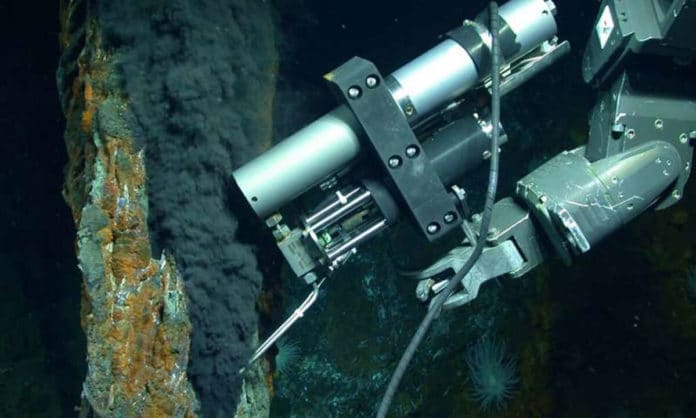Scientists had since quite a while ago noticed methane emissions from deep-sea vents. Be that as it may, while the gas is copious in an atmosphere where living things deliver it, the source of methane at the ocean bottom was a puzzle.
A new study offers strong evidence on formation and abundance of abiotic methane on Earth and suggests how the gases could have a comparable beginning on other planets and moons, even those no more extended home to liquid water.
Scientists analyzed 160 rock samples from across the world’s oceans, almost all contained pockets of methane. These oceanic deposits make up a reservoir exceeding the amount of methane in Earth’s atmosphere before industrialization.
Frieder Klein, a marine geologist at WHOI and lead author of the study, said, “We were amazed to find this massive pool of abiotic methane in the oceanic crust and mantle.”
Raman spectroscopy technique was used to determine rock samples. Using the method, scientists were able to identify fluids and minerals in a thin slice of rock. They found that every sample contained an assemblage of minerals and gases that form when seawater, moving through the deep oceanic crust, is trapped in magma-hot olivine.
As the mineral cools, the water caught inside undergoes a chemical reaction, a procedure called serpentinization that forms hydrogen and methane. The authors show that in otherwise inhospitable environments, only two ingredients—water and olivine—can form methane.
Jeffrey Seewald, a senior scientist at WHOI who studies geochemistry in hydrothermal systems, said, “Here’s a source of chemical energy that’s being created by geology. On Earth, deep-sea methane might have played a critical role in the evolution of primitive organisms living at hydrothermal vents on the seafloor. And elsewhere in the solar system, on places like Jupiter’s moon Europa and Saturn’s Enceladus, methane produced through the same process could provide an energy source for basic life forms.”
The study is published in the Proceedings of the National Academy of Science.
